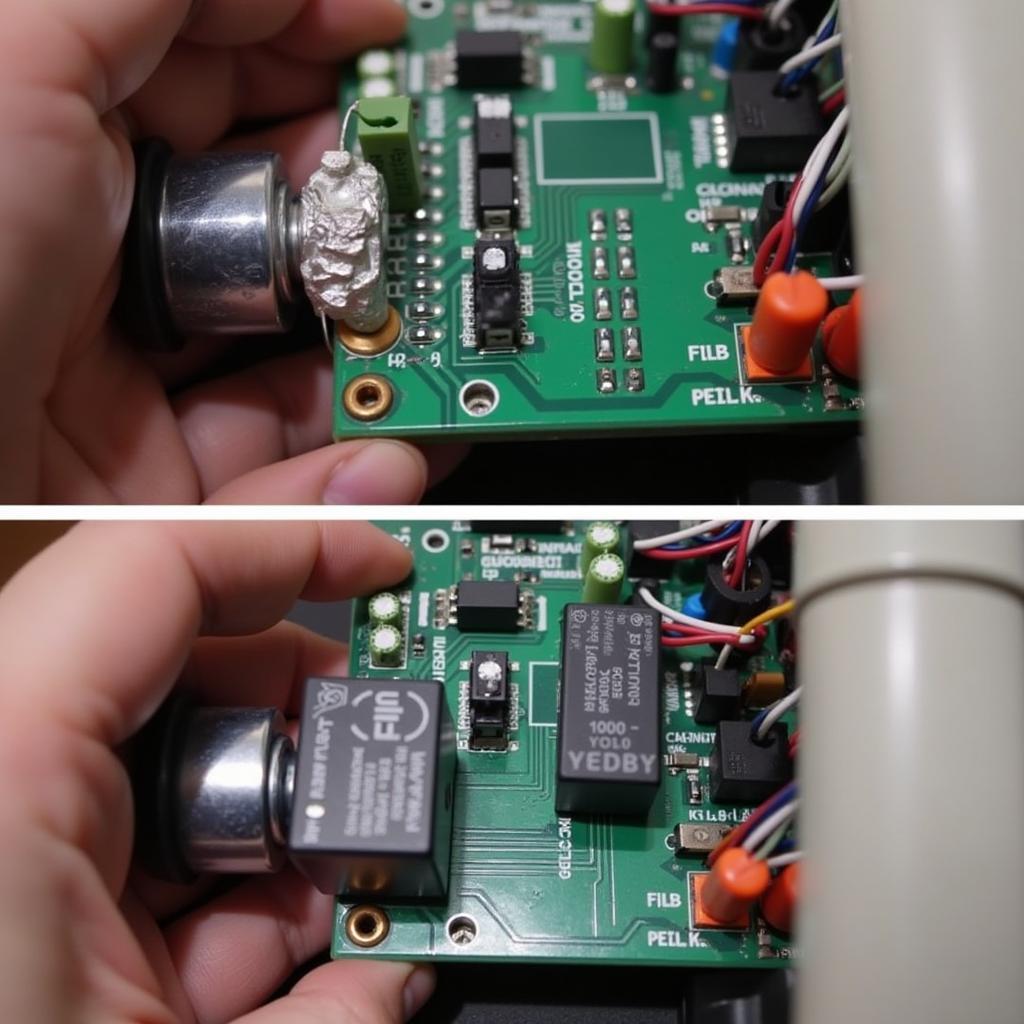Your cart is currently empty!

Decoding 01826 VCDS: Supply Voltage Terminal 30 Issues
The dreaded “01826 vcds supply voltage terminal 30” error code can bring a cold sweat to any car owner. This cryptic message often indicates a power supply problem within your vehicle’s electrical system, and understanding it is crucial for both DIY mechanics and professional technicians. This article dives deep into the 01826 fault code, explaining its causes, symptoms, diagnostic procedures, and solutions, empowering you to tackle this issue head-on.
Understanding the 01826 VCDS Supply Voltage Terminal 30 Fault Code
The 01826 code, often accompanied by the description “Supply Voltage Terminal 30 – Implausible Signal,” signifies an irregularity in the voltage supplied to Terminal 30. Terminal 30 is a crucial power distribution point in your car’s electrical system, providing continuous power to essential components like the ECU, fuel pump, and ignition system. An implausible signal means the voltage reading at Terminal 30 is outside the expected range, either too high or too low. This can lead to a variety of drivability issues and should be addressed promptly.
 VCDS Terminal 30 Location
VCDS Terminal 30 Location
Common Causes of 01826 VCDS Error
Several factors can contribute to the 01826 error. These include:
- Weak or failing battery: A low battery voltage can directly impact the supply to Terminal 30.
- Faulty alternator: A malfunctioning alternator won’t charge the battery properly, leading to low voltage.
- Corroded or loose connections: Poor connections at Terminal 30 or along the power supply line can disrupt voltage flow.
- Wiring issues: Damaged or broken wires can interrupt the power supply to Terminal 30.
- Faulty relay: A defective relay controlling power to Terminal 30 can cause intermittent voltage drops.
Diagnosing the 01826 Fault Code
Diagnosing the 01826 code involves a systematic approach. Here’s a step-by-step guide:
- Connect a VCDS scanner: Retrieve the fault code and any associated freeze frame data.
- Check the battery voltage: Use a multimeter to measure the battery voltage. A healthy battery should read around 12.6 volts.
- Inspect the alternator output: With the engine running, the alternator should output around 14 volts.
- Examine Terminal 30 connections: Look for any signs of corrosion, loose wires, or damage.
- Test the relevant relays: Use a relay tester or swap the suspect relay with a known good one.
“A thorough inspection of the wiring and connections is absolutely crucial,” advises John Miller, a seasoned automotive electrical systems engineer with over 20 years of experience. “Often, the problem isn’t a major component failure but a simple loose connection or corroded terminal.”
Fixing the 01826 VCDS Error
Once you’ve identified the root cause, fixing the 01826 error can involve:
- Replacing the battery: If the battery is weak or failing, replacement is the only solution.
- Repairing or replacing the alternator: A faulty alternator requires professional attention.
- Cleaning and tightening connections: Use a wire brush and contact cleaner to remove corrosion and ensure tight connections.
- Repairing or replacing damaged wiring: Any damaged wiring should be repaired or replaced by a qualified technician.
- Replacing faulty relays: Replace any defective relays with new ones.
What Happens if You Ignore the 01826 Code?
Ignoring the 01826 code can lead to further complications, such as:
- Starting problems: The engine may crank slowly or not start at all.
- Stalling: The engine may stall while driving, especially at low speeds.
- Electrical malfunctions: Other electrical systems may malfunction due to the unstable power supply.
 Replacing a Faulty Relay for Terminal 30
Replacing a Faulty Relay for Terminal 30
“Addressing the 01826 code promptly can prevent further damage and costly repairs down the line,” says Sarah Johnson, a certified automotive technician and instructor with extensive experience in diagnosing and repairing electrical system faults. “Don’t wait for a complete breakdown; get it checked as soon as possible.”
Conclusion: Tackling the 01826 VCDS Supply Voltage Terminal 30 Issue
The 01826 vcds supply voltage terminal 30 error can seem daunting, but with a systematic approach to diagnosis and repair, it’s a manageable issue. By understanding the underlying causes and following the steps outlined in this guide, you can effectively resolve this problem and get your car back on the road. Need further assistance? Connect with our expert team at vcdstool at +1 (641) 206-8880 and our email address: vcdstool@gmail.com or visit our office at 6719 W 70th Ave, Arvada, CO 80003, USA.
FAQ
- What is Terminal 30 in a car? Terminal 30 is a constant power supply point in your car’s electrical system.
- Can a low battery cause the 01826 code? Yes, a low battery voltage can trigger the 01826 code.
- How do I test the alternator output? Use a multimeter to measure the voltage across the battery terminals with the engine running.
- Is it safe to drive with the 01826 code? While it might be possible to drive for a short period, it’s recommended to address the issue promptly to avoid further complications.
- Do I need a VCDS scanner to diagnose the 01826 code? Yes, a VCDS scanner is necessary to retrieve the specific fault code and associated data.
- How much does it cost to fix the 01826 code? The cost can vary depending on the underlying cause, ranging from a simple cleaning of connections to replacing major components like the alternator or battery.
- Where can I find more information about VCDS codes? Numerous online resources and forums dedicated to VCDS and automotive diagnostics can provide further insights.
by
Tags:
Leave a Reply